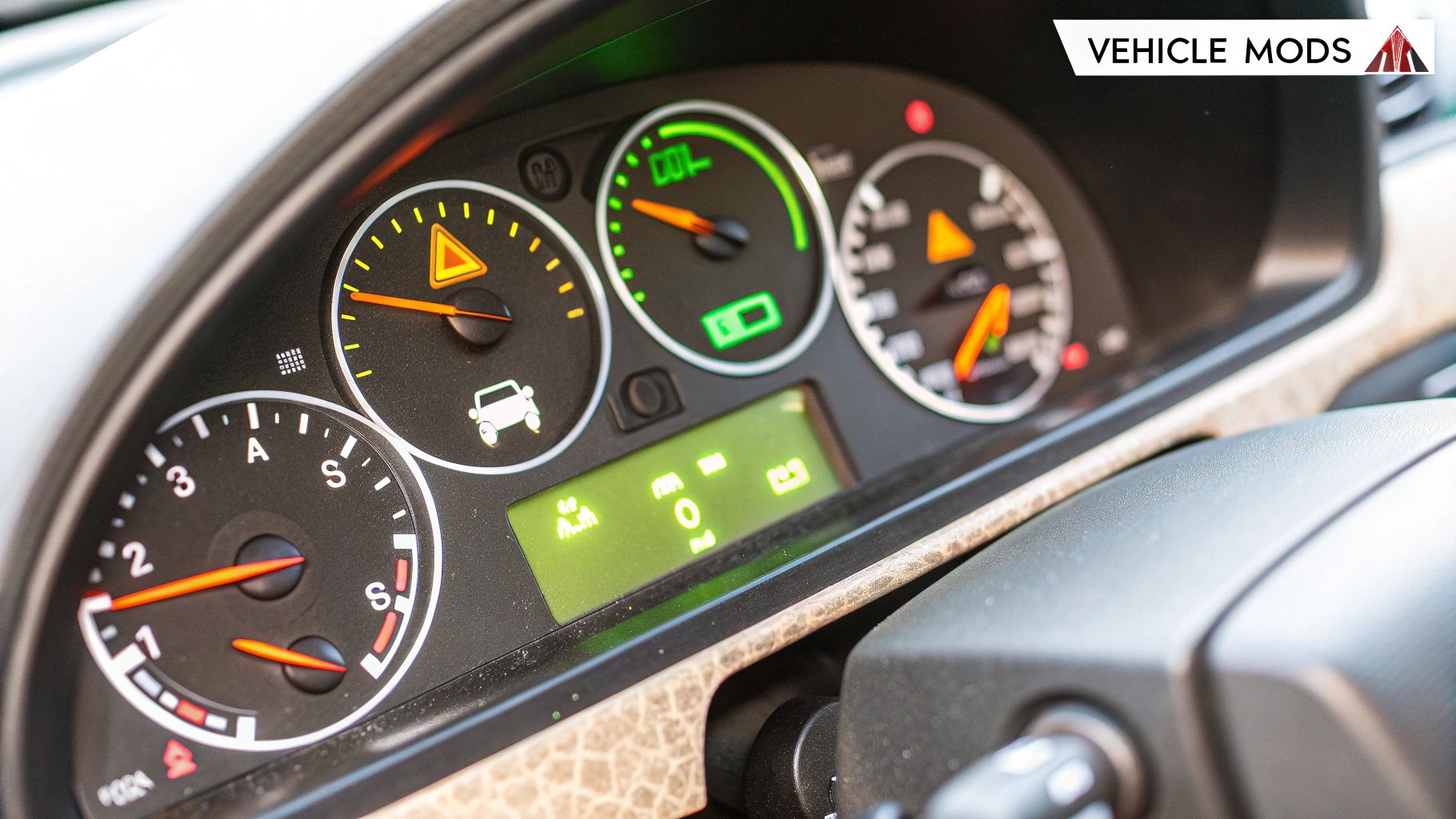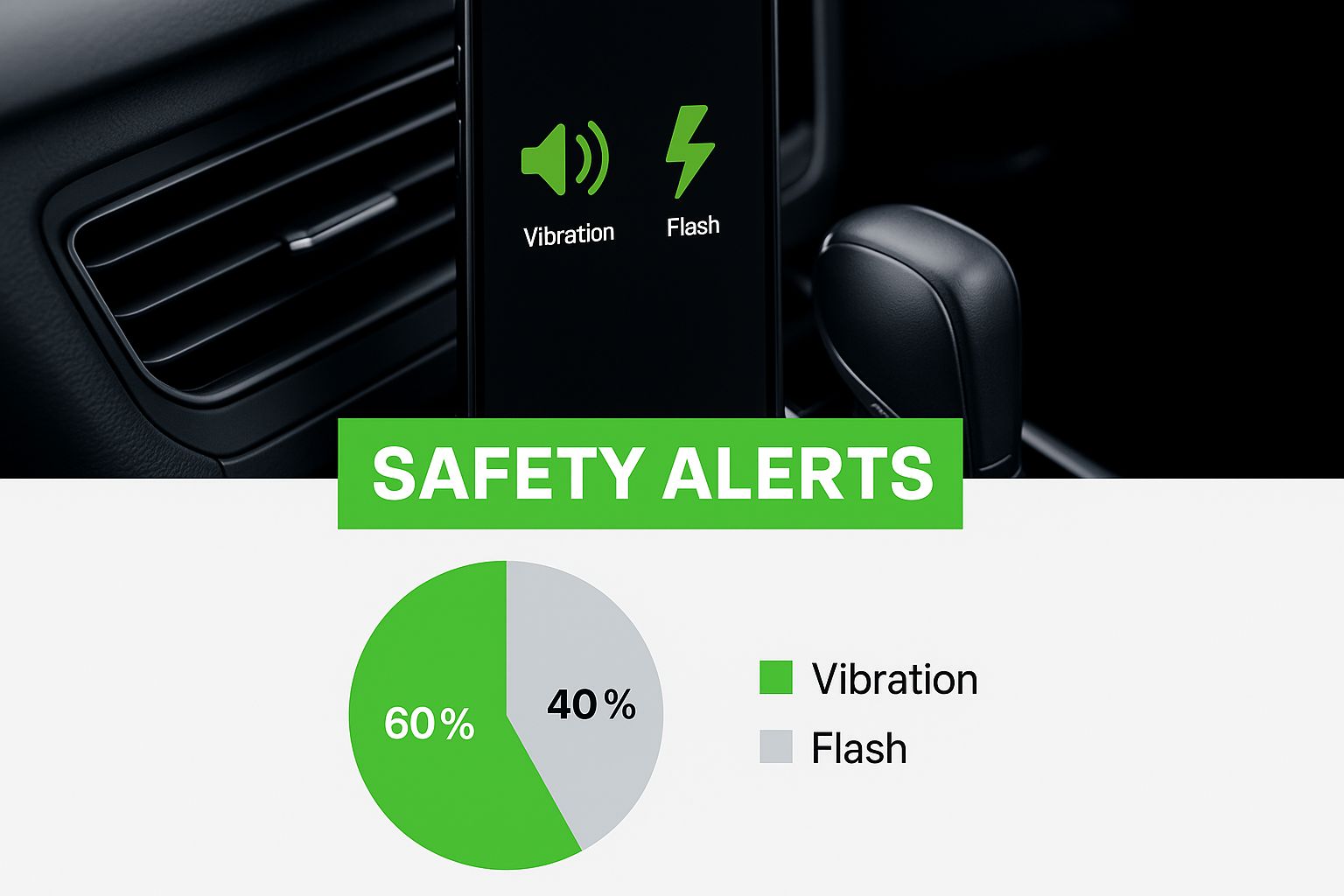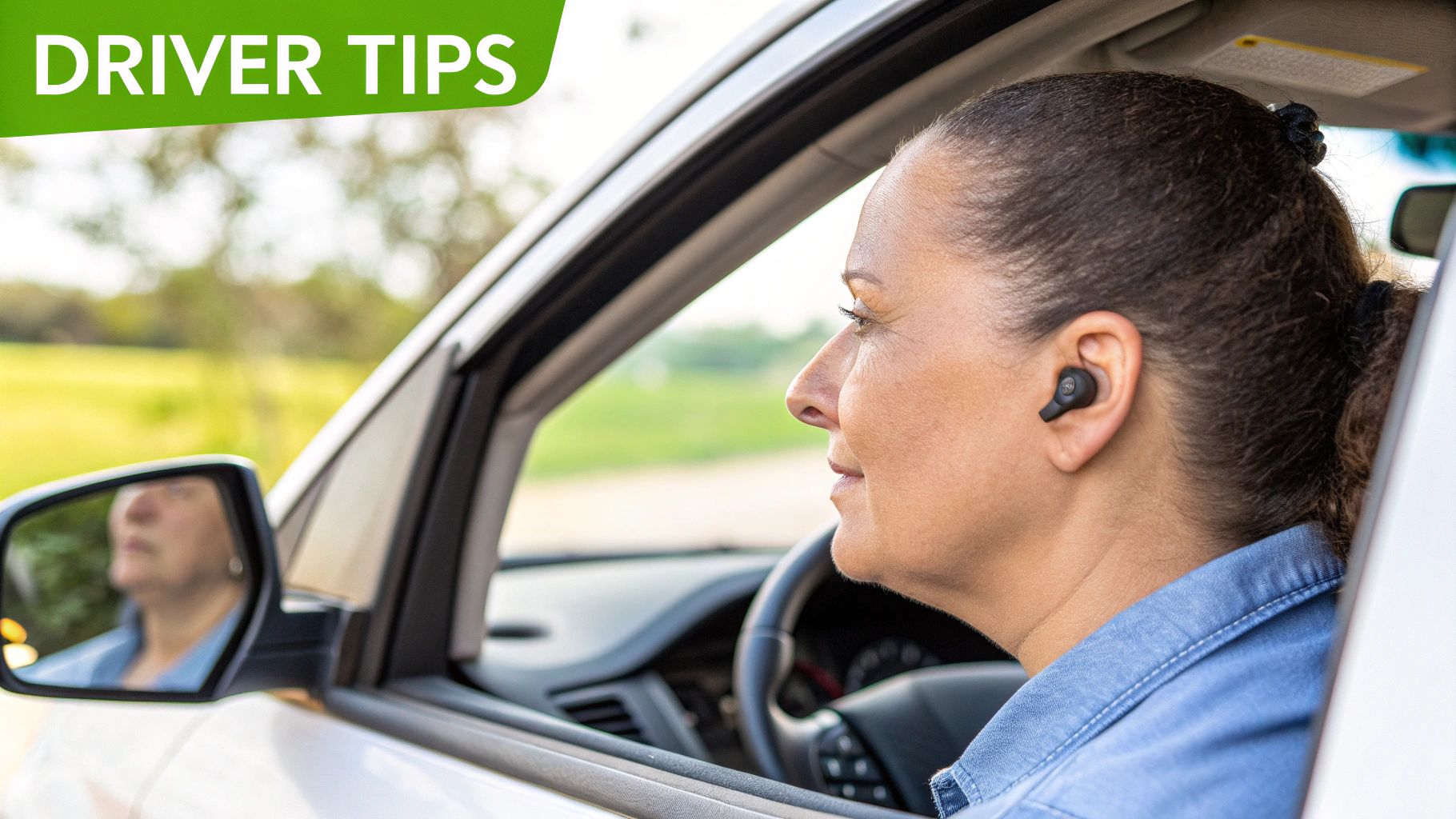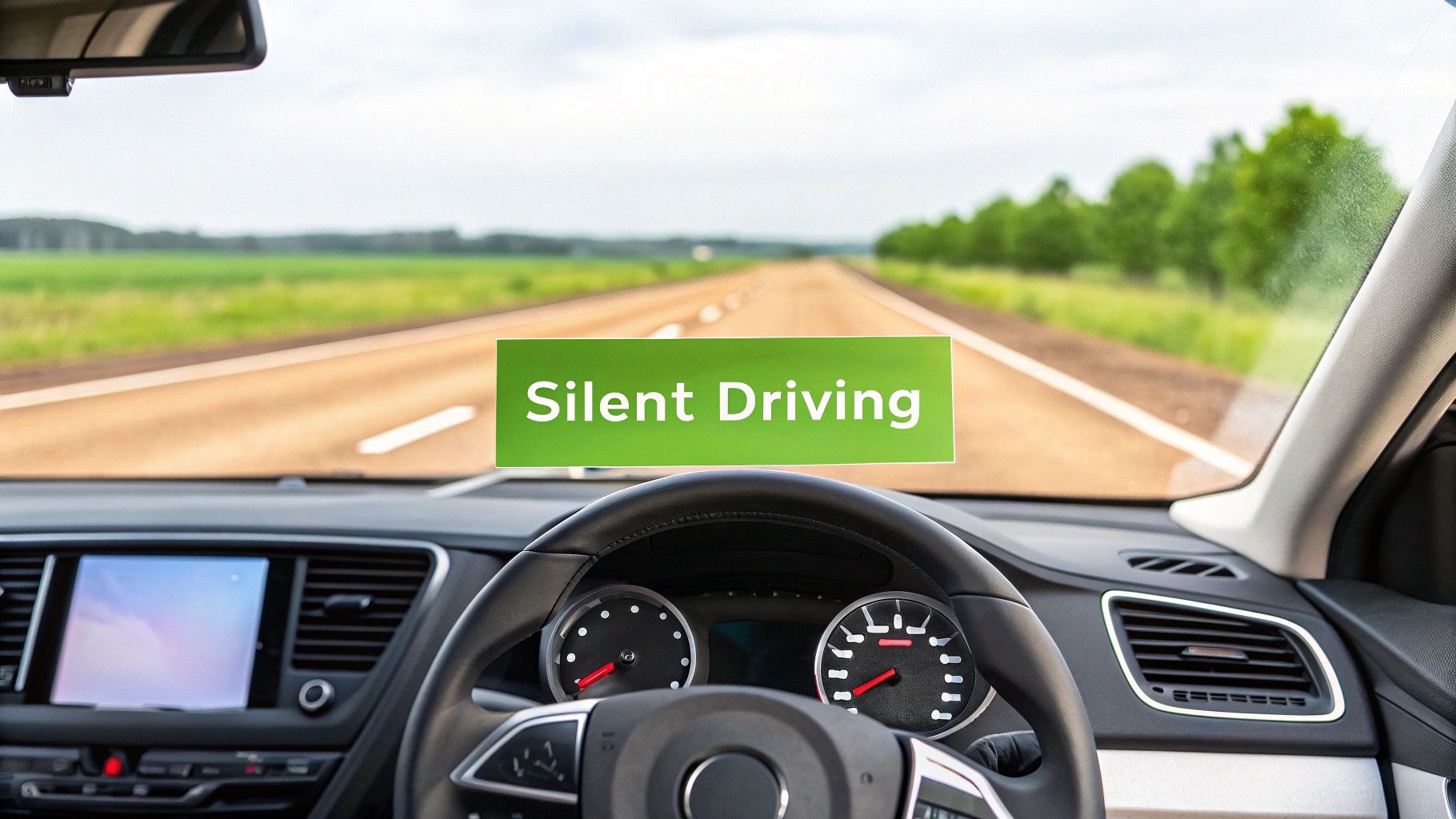Breaking The Myths: Can Deaf People Actually Drive Safely?
The short answer might surprise you: deaf people can be exceptional drivers. In fact, they often demonstrate strong safety records on the road. This might seem counterintuitive, leading many to wonder how someone who can't hear can navigate the complexities of UK roads. Let's address these common misconceptions and explore why these myths persist.
One persistent myth is that hearing is absolutely essential for safe driving. However, driving is primarily a visual skill. We rely on our eyes to see traffic lights, pedestrians, other vehicles, and road signs. While hearing can be helpful in certain situations, it's not the primary sense used for driving. This means the absence of hearing doesn't automatically disqualify someone from being a safe and competent driver.
Additionally, many deaf drivers develop heightened visual awareness to compensate for their lack of hearing. They might become more attuned to subtle visual cues, like changes in traffic flow or the body language of other drivers. This enhanced visual attention can make them even more observant and responsive on the road, potentially leading to quicker reaction times in certain situations. Furthermore, deaf people in the UK face challenges in driving due to various factors, including accessibility and awareness. While specific UK statistics on deaf drivers are limited, it's recognized that deaf individuals can drive as safely as hearing individuals with appropriate visual aids and technology. Learn more about this topic from the National Deaf Children's Society.
Dispelling Common Misconceptions About Deaf Drivers
Several myths contribute to negative perceptions of deaf drivers. Let’s debunk some of the most common ones:
-
Myth 1: Deaf Drivers Can't Hear Emergency Sirens. While this is true, several technological solutions, like visual alert systems, effectively address this. These systems convert auditory signals into visual cues.
-
Myth 2: Deaf Drivers Are Easily Distracted. On the contrary, deaf drivers are often less distracted than hearing drivers. They aren't subject to auditory distractions from radios, conversations, or mobile phones.
-
Myth 3: Deaf Drivers Are More Likely to Be Involved in Accidents. There's no evidence to support this. Some studies suggest deaf drivers have similar or even lower accident rates than hearing drivers.
The UK's legal framework reinforces that deaf people can drive safely. The DVLA (Driver and Vehicle Licensing Agency) doesn't prohibit deaf individuals from obtaining a driving license, provided they meet the standard requirements for vision, health, and driving competency. This demonstrates the official recognition that deafness doesn't inherently impede safe driving.
The Importance of Visual Aids and Technology
The development of assistive technologies has been significant in empowering deaf drivers. These tools enhance their safety and overall driving experience. Some examples include:
- Vibrating Steering Wheel Alerts: These alert the driver to emergency sirens, horns, and other important auditory cues.
- Enhanced Rear-View Mirrors: These provide a wider field of vision, compensating for blind spots.
- Dashboard-Mounted Visual Displays: These relay information about nearby vehicles, speed limits, and navigation instructions.
By embracing these technologies, deaf drivers can confidently navigate the roads and overcome challenges posed by their lack of hearing. This combination of heightened visual awareness, adaptive strategies, and assistive technologies contributes to their overall safety and driving proficiency.
The Numbers Game: Understanding Deaf Drivers Across The UK

The number of deaf and hard of hearing drivers in the UK is substantial. This significant community represents a considerable portion of the driving population. Understanding its scale is crucial for developing the necessary support systems and ensuring road safety for all. Recognizing the diverse nature of hearing loss is the first step. This includes acknowledging the range from mild impairment to profound deafness and how these varying degrees affect individual driving experiences.
The overall prevalence of deafness and hearing loss within the UK underscores this importance. One in three adults, representing over 18 million people, experience some form of hearing loss or tinnitus. This emphasizes the need to address the requirements of this large segment of the population, especially regarding driving. More detailed statistics can be found here. For example, a driver with mild hearing loss may depend more heavily on visual cues, whereas a profoundly deaf driver might use specialized technology.
Support Systems And Driving Considerations
Different levels of hearing impairment naturally lead to different driving considerations. Understanding the variety of support systems available for deaf individuals learning to drive is vital. These resources, ranging from specialized driving instructors to adapted learning materials, help build confidence and driving competence. You might be interested in learning more about intensive driving courses. Such tailored approaches empower deaf individuals to become safe and independent drivers.
The increasing number of deaf drivers highlights the need for greater awareness and understanding amongst all road users. This heightened awareness creates a more inclusive and safer driving environment. It also encourages the development of assistive technologies and infrastructure modifications that benefit everyone on the road. Examples include clearer road signage and enhanced traffic management systems. Ultimately, appreciating the scale of the deaf driver community in the UK is essential for creating a safer and more inclusive experience for all drivers.
Game-Changing Technology: Visual Aids That Transform Driving
Driving presents unique challenges for deaf individuals. Traditional reliance on auditory cues for navigation and safety becomes impossible, demanding alternative solutions. Modern technology is stepping in to bridge this gap, providing innovative tools to enhance the driving experience and improve safety for deaf drivers in the UK. Learn more from the National Deaf Children's Society.

This infographic highlights the power of smartphone apps. These apps translate crucial auditory information, like emergency sirens, into visual alerts and vibrations. This readily available technology empowers deaf drivers to react swiftly and safely, boosting their confidence on the road.
Dashboard Modifications and Enhanced Mirror Systems
Moving beyond smartphone apps, dashboard modifications provide another level of support. Visual displays integrated into the dashboard can communicate vital information directly to the driver. This includes details like speed limits, navigation instructions, and the proximity of other vehicles. This visual feedback complements the expanded field of vision provided by enhanced mirror systems, which help minimize blind spots and increase overall situational awareness. Wider rear-view and side mirrors are particularly helpful in compensating for the lack of auditory cues.
AI-Powered Alerts and Emerging Innovations
AI-powered systems represent a significant advancement in driving technology for the deaf community. These systems analyze real-time traffic data to predict and warn drivers of potential hazards. For example, they can provide visual alerts for sudden braking or lane changes by nearby vehicles. This predictive capability enhances safety by providing crucial information before a situation becomes visually apparent.
To better understand the features and benefits of various technology solutions for deaf drivers, take a look at the table below:
Technology Solutions for Deaf Drivers: Features and Benefits
A comprehensive comparison of available technology solutions showing features, costs, and effectiveness ratings
| Technology Type | Key Features | Approximate Cost | Installation Difficulty | Effectiveness Rating |
|---|---|---|---|---|
| Smartphone Apps | Visual and vibration alerts for sirens, horns, and other crucial sounds | Free – £20 | Easy (app download) | Moderate to High |
| Dashboard Modifications (Visual Displays) | Speed, navigation, and vehicle proximity information displayed visually | £100 – £500+ | Moderate (professional installation may be required) | High |
| Enhanced Mirror Systems | Wider field of vision, reduced blind spots | £50 – £200 | Easy to Moderate (depending on the type of mirror) | Moderate |
| AI-Powered Alert Systems | Real-time hazard prediction and visual warnings | £200 – £1000+ (often integrated into newer vehicles) | Varies (depending on the system and vehicle) | High |
| Haptic Feedback Systems (Emerging) | Vibrations through the steering wheel or seat to alert drivers to road conditions and hazards | Not yet widely available | N/A | Potential to be Very High |
This table summarizes the key features, costs, installation difficulty, and effectiveness of each technology. While smartphone apps provide a readily accessible entry point, more sophisticated solutions like AI-powered systems offer enhanced safety benefits. Emerging technologies like haptic feedback systems hold even greater promise for the future.
The Future of Driving Technology for the Deaf
Looking ahead, the future of driving technology for deaf individuals is filled with potential. Ongoing research and development efforts are focused on creating even more integrated and intuitive solutions. Haptic feedback systems, currently under development, offer a promising example. These systems would use vibrations through the steering wheel or seat to alert drivers to various road conditions and hazards, further enhancing safety and accessibility. These advancements promise to create a more inclusive and safer driving experience for everyone, regardless of hearing ability.
Navigating UK Legal Requirements And DVLA Processes
Understanding the legal requirements for deaf drivers in the UK can feel overwhelming, but the process is often straightforward. This section clarifies the DVLA (Driver and Vehicle Licensing Agency) requirements and application process, ensuring you understand your rights and responsibilities.
DVLA Requirements and Medical Declarations
For standard car and motorcycle licenses, you are not required to inform the DVLA about your deafness. This differs from licenses for larger vehicles (lorries, buses, coaches), where declaration is mandatory. However, it's essential to disclose any medical condition, including hearing loss, that might affect your driving. This honesty protects you and other road users.
For instance, if your deafness affects your balance, you must disclose this to the DVLA. This ensures a proper assessment of your fitness to drive. A hearing test isn't part of the standard driving license application, but your overall health and its impact on your driving will be assessed.
Application Process and Additional Evaluations
The driving license application process is the same for deaf and hearing individuals. This includes passing both the theory and practical driving tests. The DVLA focuses on assessing overall competency and safe driving practices, regardless of hearing ability. Key skills assessed include visual perception, hazard awareness, and vehicle control.
The DVLA may request further medical evaluations if a declared medical condition could potentially affect driving safety. These evaluations ensure all drivers meet the required safety standards, safeguarding public safety and upholding the rights of individuals with disabilities to drive.
Legal Protections and Insurance Considerations
UK law, specifically the Equality Act 2010, protects deaf drivers from discrimination. Deaf individuals have equal access to driving privileges, and insurance companies cannot impose higher premiums solely based on deafness. However, disclosing any balance issues related to your hearing loss is vital, as this could affect insurance coverage.
This protection ensures fair access to driving, removing barriers based on disability. Insurance premiums are determined by factors like driving history, age, and vehicle type, not solely on hearing. This ensures fair treatment for deaf drivers within the UK insurance system.
Communicating With The DVLA And Accessing Support
The DVLA provides resources to help deaf individuals communicate effectively. You can request a British Sign Language (BSL) interpreter for your practical driving test to ensure clear communication with the examiner. Similar support, including BSL interpretation or written questions, is available for the theory test.
This inclusive approach aims to make the licensing process accessible and comfortable for everyone. It underscores the commitment to equal opportunities for deaf individuals to obtain a driving license and fosters a supportive environment throughout the process.
Mastering The Road: Practical Techniques For Confident Driving
Deaf drivers often develop exceptional visual skills and employ unique driving strategies that can benefit all motorists on UK roads. These techniques, refined through experience and specialized training, enhance safety and build confidence in various driving situations.
Enhanced Mirror Use and Visual Scanning
Maximizing visibility is crucial for safe driving. Deaf drivers frequently employ a wider visual scanning technique, consistently checking mirrors and anticipating potential hazards. Regular mirror checks, going beyond the typical quick glance in the rearview mirror, create a 360-degree awareness of surrounding traffic. This proactive approach allows drivers to anticipate and react to potential problems more effectively. Adjusting your seat position for optimal visibility is also key. This ensures a clear view of all mirrors and the road ahead, minimizing blind spots.
Navigating Challenging Scenarios With Confidence
Specific strategies can improve navigation in complex situations. In busy city centres, careful observation of pedestrian movements and traffic signals is paramount. On motorways, maintaining safe following distances and anticipating lane changes is essential. For new drivers, resources like How to master driving as a beginner can be particularly helpful. This proactive mindset leads to safer and more predictable driving.
Handling Emergency Vehicles and Adverse Weather Conditions
Responding effectively to emergency vehicles demands heightened visual attention. Regularly scanning mirrors and the road ahead helps identify flashing lights or other visual cues indicating approaching emergency vehicles. This vigilance allows for prompt and safe reactions. Adverse weather, such as heavy rain or fog, requires increased concentration and reduced speeds. Adapting to these changing conditions and prioritizing safety helps deaf drivers navigate these challenges skillfully.
Effective Communication and Passenger Interaction
Clear communication with passengers is vital. Simple hand signals or pre-arranged communication methods can relay important information without relying on auditory cues. This ensures everyone in the vehicle is aware of the driving situation, contributing to a safer journey. Using indicators clearly and proactively signals your intentions to other road users, further enhancing safety. These communication strategies foster a safe and comfortable environment for both the driver and passengers.
Building Awareness and Future Innovations on the Horizon
The UK driving landscape is constantly changing for deaf individuals, thanks to technological advancements and a growing emphasis on inclusivity. Numerous projects are underway to improve awareness and establish more robust support networks. These efforts are vital for creating a safer, more accessible driving experience for everyone.
Deaf Awareness Campaigns and Public Perception
Deaf Awareness campaigns are instrumental in shifting public perception and promoting understanding. These campaigns educate the public on the abilities of deaf drivers and dispel common misconceptions. For instance, many mistakenly believe that hearing is crucial for safe driving, overlooking the fact that driving relies primarily on visual skills. This evolving public understanding helps create a more inclusive and supportive atmosphere for deaf drivers. There is increasing recognition of the need for more substantial awareness and support for deaf individuals in the UK, extending to areas such as driving. Technological progress, like AI-powered hearing aids and smartphone-integrated assistive devices, are transforming how deaf people engage with the world around them, potentially enriching their driving through improved visual and auditory feedback. Learn more about this topic here.
Emerging Innovations and Smart City Infrastructure
Technology is revolutionizing the driving experience for deaf people. AI-powered systems, designed to improve safety, are currently being developed to provide visual warnings of potential hazards. Smart city infrastructure, with its enhanced signage and traffic management systems, further increases accessibility. These advancements offer enormous potential for creating a more inclusive and secure driving environment for all. You might also be interested in this article: How to master driving as a nervous driver.

Policy Developments and Industry Partnerships
Policy changes and collaborations within the automotive sector are also fueling positive momentum. These initiatives strive to guarantee deaf drivers have the same access to opportunities and comprehensive support as their hearing counterparts. Industry partnerships are concentrating on developing and incorporating accessible technology into vehicles, while policy modifications aim to simplify licensing processes and address the distinct obstacles faced by deaf drivers. For example, some organizations are actively working to improve the accessibility of driving lessons and tests.
Community Initiatives and Advocacy Efforts
Grassroots movements and advocacy organizations within the deaf community are actively influencing the future of accessible driving. These groups work to raise awareness, advocate for policy adjustments, and create support systems for deaf drivers. Their work empowers deaf people to become self-assured and independent drivers while championing inclusivity within the larger driving community. These collective initiatives highlight the continuous dedication to making driving more accessible and secure for deaf individuals in the UK. They are creating a future where everyone, irrespective of hearing ability, can experience the independence and freedom of driving.
Key Takeaways For Your Safe Driving Journey
This section offers helpful advice for deaf drivers in the UK, turning key information into practical steps. Whether you are a deaf driver yourself, a family member, or an advocate for greater accessibility, these takeaways will help you navigate the road ahead.
Technology and Adaptations for Enhanced Safety
-
Visual Alert Systems: Consider installing vibrating steering wheel alerts or visual displays mounted on the dashboard. These can signal emergency vehicle sirens and other important sounds you might otherwise miss.
-
Enhanced Mirrors: Wider rear-view and side mirrors can significantly broaden your field of vision, compensating for the absence of auditory cues. Adjusting your mirrors correctly is vital to maximize their effectiveness.
-
AI-Powered Alerts: Some vehicles now feature AI systems that provide real-time hazard prediction. These systems can offer visual warnings for sudden braking or lane changes made by nearby vehicles.
Legal Clarity and DVLA Procedures
-
Declaration Requirements: Declaring deafness to the DVLA is not mandatory for standard car and motorcycle licenses. However, it's important to be honest about any health condition that could affect your driving.
-
Standard Licensing Process: The application process for deaf drivers is the same as for hearing drivers. It involves both a theory and practical test. The DVLA focuses on assessing your overall driving competency, not your hearing ability.
-
Equality Act 2010: The Equality Act 2010 protects deaf drivers from discrimination, ensuring equal access to driving privileges and fair insurance practices.
Building Confidence Through Practical Techniques
-
Mastering Mirror Use: Regular and thorough mirror checks are essential for creating 360-degree awareness on the road. This proactive approach helps compensate for the lack of auditory input.
-
Visual Scanning Techniques: Practice a systematic way of scanning the road. Pay close attention to pedestrian movements and anticipate potential hazards.
-
Strategic Positioning: Adjust your car seat to optimize your visibility. This minimizes blind spots and ensures a clear view of all your mirrors and the road ahead.
Staying Informed About Future Innovations
-
Ongoing Research: Stay informed about the latest research and development in assistive driving technologies. Haptic feedback systems, for example, hold promising potential for the future.
-
Advocacy Groups: Connect with advocacy groups and community initiatives that promote awareness and support for deaf drivers. Their work is instrumental in shaping the future of accessible driving.
-
Smart City Developments: Keep up-to-date with advancements in smart city infrastructure. Improvements in signage and advanced traffic management systems can contribute to safer roads for all drivers.
To help you find the right resources, the table below lists organizations and services that offer support to deaf drivers in the UK.
Essential Resources and Support Services for Deaf Drivers
A directory of key organisations, services, and resources available to deaf drivers in the UK
| Organisation/Service | Support Type | Contact Method | Geographic Coverage | Cost |
|---|---|---|---|---|
| National Deaf Children's Society | Information and support | Website, phone | UK-wide | Varies |
| Royal National Institute for Deaf People (RNID) | Advocacy and resources | Website, phone | UK-wide | Varies |
| Local Driving Schools Specialising in Deaf Instruction | Driving lessons and assessments | Contact directly | Varies | Varies |
This table provides a starting point for accessing valuable resources and support. Remember to explore local options and connect with other deaf drivers to share experiences and build a supportive community.
Ready to begin your driving journey with confidence? Fast Pass Driving Courses offers intensive and semi-intensive driving instruction across the UK, tailored to your individual needs. Visit Fast Pass Driving Courses today!

